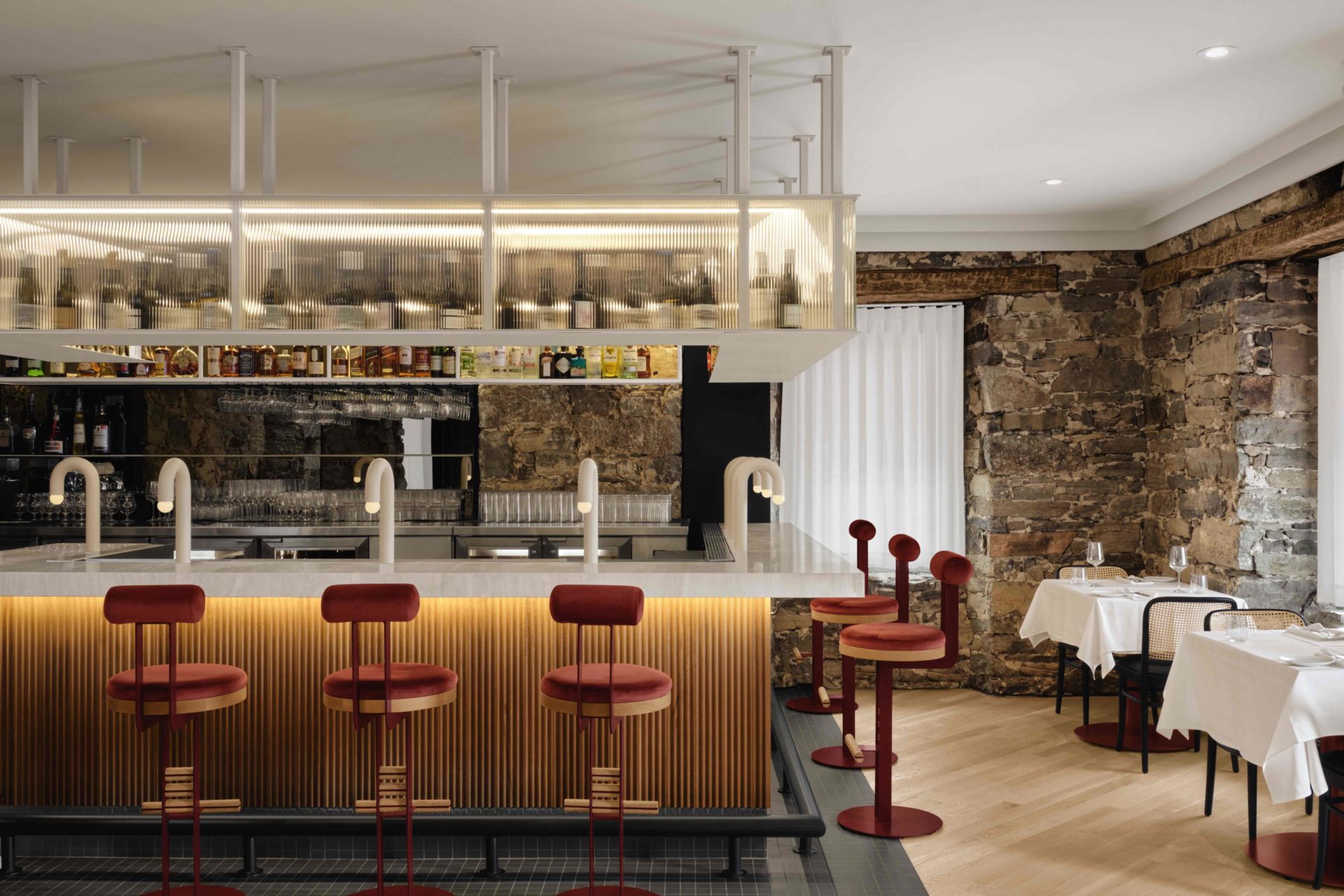 Arper’s new KIIK line. Photo Marco Covi|||
Arper’s new KIIK line. Photo Marco Covi|||
Milan design week has wrapped for another year, but there is still plenty to digest and reflect on. This year there was no dedicated office show – Workplace at Salone del Mobile takes place every other year and is due in 2019 – but nevertheless there was some interesting launches and installations worth noting.
In terms of products, the major takeaway from Salone del Mobile was certainly the blurring of the boundaries between work and living spaces with plenty of brands investing heavily in modularity, flexibility, and design; leaving behind the sterile corporate workplace style once and for all.
Arper launched Ichiro Iwasaki’s new Kiik collection, a partnership with the eponymous Japanese studio. This modular line of seating, tables, ottomans, and consoles creates moments for working, gathering, or relaxation in graphic forms with myriad configurations. Kiik’s fundamental structures can be created with seats with and without backrests and tables in triangular, circular, square or rectangular shapes and completed with ottomans and low or raised consoles.
Patricia Urquiola’s Radical Fake desk for Cappellini was a stand-out in an already well-rounded stand. The desk is coupled with a small shelving unit, but its the polished materials – oak and Venetian marble, both exquisitely faux – that make this special. The colour alone in the non-Venetian marble version is sure to spruce up any workspace.
 Patricia Urquiola’s Radical Fake desk for Cappellini.
Patricia Urquiola’s Radical Fake desk for Cappellini.
Another great workstation is the Jak desk by Patrick Norguet for Tacchini. It’s a very structural piece with strong vintage vibes, but perfectly adapted for the digital age with USB ports and a metal base. Explicitly designed for the home and workplaces, it is a big step for a heritage brand like Tacchini.
 Tacchini Jak desk for Tacchini has in-built USB ports
Tacchini Jak desk for Tacchini has in-built USB ports
Hay was not exhibiting in Salone this year, and opted instead for a flush takeover of a Brera palazzo in partnership with Sonos and WeWork. But despite the polished showroom, it was the Bouroullec Brothers’ simple and elegant plastic Élémentaire chair that stole the show. The chair is strong and simple, comprised of clean lines and muted colours, but more importantly, it’s inexpensive without sacrificing design.
 Ewan and Ronan Bouroullec’s cutting edge plastic chair for Hay
Ewan and Ronan Bouroullec’s cutting edge plastic chair for Hay
Fuorisalone installations have long been some of the most anticipated aspects of Milan Design Week. At once an explorations of the intersection of design, art and culture, and a chance for brands to splash their cash with abandon – in true Milanese style. A rare measured showing came from Sony, which set up shop at the Zona Torotona outpost of italian menswear couturier Ermenegildo Zegna with their Hidden Senses show.
 The Sony Hidden Senses exhibit was all about challenging how we interact with technology
The Sony Hidden Senses exhibit was all about challenging how we interact with technology
The enormous retail area was emptied of its usual sharp suits and patterned shirts, and partitioned by billowing curtains; in each resulting space Sony presented a series of ‘sensorial experiences’ exploring how smart technology will change our homes in the near future. None of the pieces exhibited are prototypes or for sale, instead they are a technological show of prowess by Sony, employed in completely mundane action: an empty jug of water that reacted to a holding hand by feeling full, sloshing around, and making the same noises as real full jug of water would; spotlights that follow the reader’s eyes and hands as they turn pages in a book on a table; a steel room divider that emits sounds of the forest when manipulated.
 Kengo Kuma’s Breath/ng was designed to absorb pollution
Kengo Kuma’s Breath/ng was designed to absorb pollution
Sustainability was the stated theme of this years’ Salone del Mobile, but it didn’t filter through into Fuorisalone with any noticeable vigour. The exception, of course, was Kengo Kuma’s pollution absorbing origami cloud installation, created with Dassault Systemes. Breath/ng, was made from large suspended origami coils of a special pollution-neutralising fabric, developed by anemotech. Containing a nano-molecule core that separates and absorbs toxic molecules. Kuma intricately folded 175 metres of the material to create an awesome cumulonimbus of white and silver. The installation was built indoors, so it’s unclear how much toxic smog it actually filtered but it was visually striking nonetheless.
Have you signed up to the OnOffice weekly newsletter yet? Do it here.
The blurring boundaries between work and play spaces was a major theme at Salone del Mobile, in a year with no designated workplace expo.































